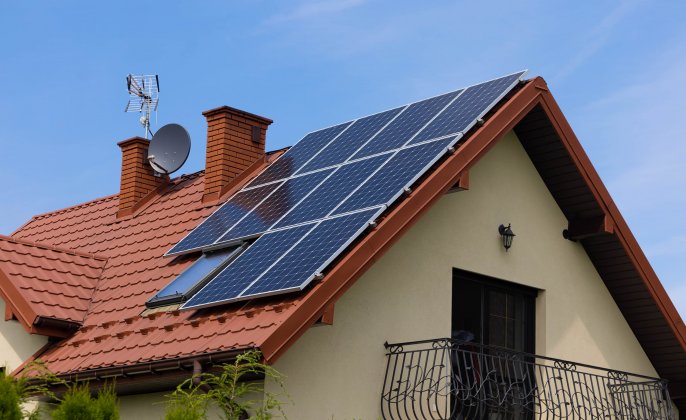Take out a loan to purchase a heat pump, and receive up to 20% of your investment back
Whether your heating system uses electricity, wood, gas or you are connected to the city’s central heating system, the market situation is so volatile that it is hard to imagine just how much the cost of heating will increase in the coming year.
Why wouldn’t you get ahead of the situation and start planning and investing in solutions that can save you from these inevitable price increases that are coming?
Have you heard of a ‘heat pump’? If not, here's an opportunity to find out everything you need to know about this technology and to see why they’re a great alternative to your current heating system. If you’ve already heard of them, the text below provides information on how you can save even more by installing a heat pump in your home.
We would like to take this opportunity to share two important things with you - heat pumps are a new technology that may be your ideal solution to achieving substantial savings in heating costs, and secondly, there is an easy way to go about obtaining a loan to purchase a heat pump and that is by applying for our Energy Efficiency Loan - heat pump that we have on offer for you at ProCredit Bank. In addition to heat pumps, we offer energy efficiency loans to finance insulation, solar panels, biomass boilers, etc. Have a loan of up to RSD 600,000 approved through our online process without having to visit the bank even once, or for a loan over RSD 600,000, you’ll have to make just one visit to the bank and you’re done. Our Energy Efficiency Loan gives you a return of up to 20% on your investment in a heat pump.
We are not going to get into the details concerning the precise mechanisms by which heat pumps operate, rather, we will focus on the advantages they offer and debunk some of the myths surrounding this technology.
Heat pumps are only useful for heating - WRONG
First of all, don’t let the name of this product fool you. It’s used for heating as well as cooling. It works on the principle of transferring heat energy from one space to another - cooling the rooms of your home in summer and heating them in winter. Additionally, they can be used to heat domestic bathing water throughout the year, thus further increasing savings.
Heat pumps utilise energy derived from renewable sources of energy - CORRECT
There are two types of heat pumps, Air-source Heat Pumps, which use air energy and Ground-source Heat Pumps, which use underground or ground water energy. Thus, they have a minimal impact on the environment. Electricity is used solely to generate compressor and pump movement, and very little is needed in these cases. For every 1 kWh consumed, heat pumps produce 2-6 kWh of heating/cooling energy.
Heating costs are reduced by 70% - CORRECT
Just how much in the way of savings are generated by heat pumps is best described if we compare the cost of heating with a heat pump to heating via other energy sources.
Take a look at the following Table:
| Facility | Energy source | Annual elevtricity costs | Cost of electricity for heat pumps |
|---|---|---|---|
| A single-family detached home | fire wood | 950 EUR | 450 EUR |
| A single-family detached home | natural gas | 1.575 EUR | 450 EUR |
| A single-family detached home | electricity | 1.940 EUR | 450 EUR |
| A flat | natural gas | 420 EUR | 120 EUR |
By installing a heat pump, you can generate savings of up to EUR 1,490 per year and do your part for the environment by reducing CO2 emissions.
Here’s another example. Let’s say you live in a 40 m2 flat, located in a residential building that uses a geothermal heat pump to generate energy. The monthly electricity bill would be RSD 1,000, where the cost of heating this size of flat via the city central heating system (through your Infostan bill) would be between RSD 5,000 and 6,000 per month. Using a storage heater to heat your flat would cost even more.
Heat pumps can only be installed in buildings under construction - WRONG
On the contrary, investors today are doing more and more testing of the land they plan to build on for geothermal waters and the possibility of installing heat pumps. In this way, the electricity bills of future flat owners will be minimal, and, very importantly, these types of investments don’t pollute the environment.
Furthermore, heat pumps are very convenient for houses with their own wells. Testing is done to determine whether there is groundwater and if it turns out that there is, it makes perfect sense to install this system because a return on investment is possible within as little as 2 to 3 years, despite the initial high cost. And, with the inevitable increase of the cost of electricity, this return period will be even shorter.
And, with our GEFF energy efficiency loans, you will save an additional 15-20% of your money, as you will receive part of your investment back.
Find out how you can apply for an Energy Efficiency Loan, and how to apply for a refund.


